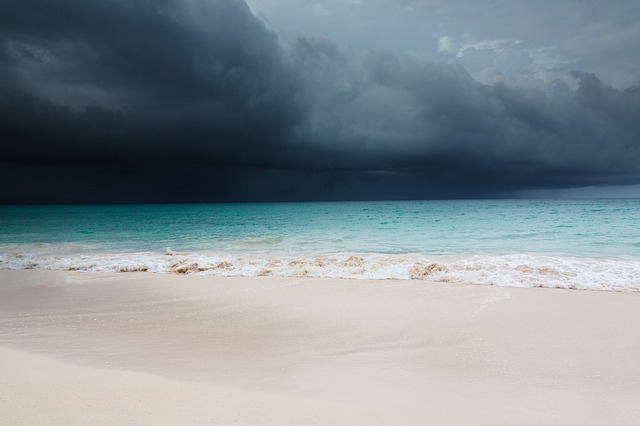Hurricane Irma brought unprecedented destruction to the Caribbean. Some Caribbean islands, such as the island of St. Martin, saw as much as 90 percent of their buildings utterly destroyed. While still grappling with the total destruction in Irma’s wake, more storms began to form in the Atlantic. First in line behind Irma was Jose, now Maria, and behind them yet another storm brewing, named Norma. Here is a quick recap of where these storms are, as of Tuesday morning:
Hurricane Jose
Hurricane Jose may have missed the Caribbean Islands and the Southeast U.S., but make no mistake: it’s still a dangerous storm. Current satellite images show Jose hovering off the coast of the Northeast U.S. and, while it is not expected to make landfall, it is creating some problematic conditions that could cause damage to coastal communities. Jose will create strong rip tides for several more days, and is expected to bring up to four inches of rainfall in Massachusetts, Connecticut, and Long Island, NY.
Hurricane Maria
Hurricane Maria may be the most dangerous storm to threaten the Caribbean this year. While it is not as large or as strong as Irma, it is following in Irma’s path as a Category 4 Hurricane, with wind speeds of up to 160 mph. What makes this storm so dangerous is where it’s making landfall, and when. The islands and communities in its path are still reeling from the destruction caused by Irma, and many displaced residents have nowhere yet to shelter. Relief efforts to supply aid to the Caribbean have been halted by the hurricane.
Maria’s path will take it to Puerto Rico who have declared a state of emergency. Current weather models show the storm weakening as it moves north of the coast of the Southeast U.S. where it should dissipate. As of Tuesday the 19th of September, Maria’s path does not threaten the U.S., although it will, like Jose, create strong rip tides for several days while it dissipates over the Atlantic.
Americans living in the Southeast should keep a close eye on Maria. As with Irma, the weather models for the storm’s path vary significantly, and an unexpected shift in direction could still occur. Residents of Florida, Georgia, and other states in the Southeast should remain vigilant and prepared.
Tropical Depression Norma
Tropical Depression Norma appeared to be gaining strength as it crossed the Atlantic, but as of Tuesday morning did not appear to have much potential to develop into a hurricane. NOAA’s weather models predict a 40% probability that it will grow into a tropical storm, and even less of a probability that it will turn into a hurricane. However, it is too early to make any firm predictions, so we will watch Norma over the next few days and revise the information we have as it filters in.
An Unusual Hurricane Season
This year has been a particularly active hurricane season. First, Harvey struck the Gulf Coast and brought unprecedented rains and flooding to the Houston, TX area. Almost immediately, Irma threatened the Caribbean and Florida, followed closely by Jose and Maria. Seemingly at all times, satellite images have shown at least three active hurricanes moving across the atlantic simultaneously. It has been a relentless series whose damage is still being assessed and whose cost in damages is climbing quickly into the hundreds of billions of dollars.



